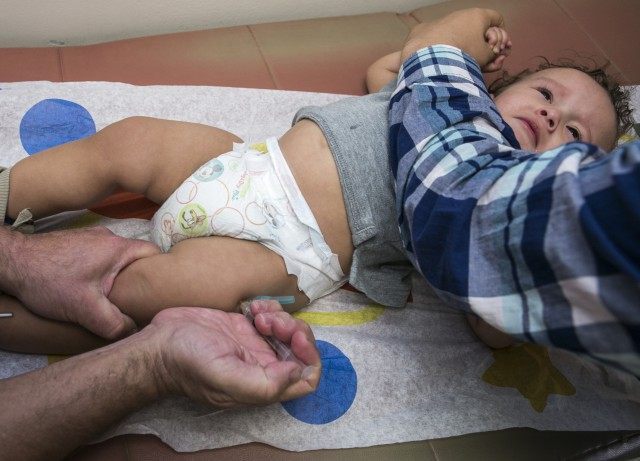Public health officials say that Texas has hit its highest number of mumps cases in more than 20 years with multiple outbreaks across the state including cases possibly linked to South Padre Island and spring break travel.
On Wednesday, the Texas Department of State Health Services (DSHS) advised the surge marked the highest number of mumps cases since 1994 when the state reported 234 cases. So far this year, Texas accounted for 221. DSHS issued an advisory to health care providers recommending they remain on high alert for patients with the highly contagious virus. They also are asking Texans to get vaccinated.
Texas authorities learned about the connection to South Padre Island mumps cases when a health department in another state contacted them about a mumps patient who traveled to the region, a popular Texas coastal student spring break hotspot for locals and young people from many other states. DSHS alerted other states and in turn, was notified of 13 instances of mumps in people who traveled to South Padre Island between March 8 and March 22 from six states, including two individuals from Texas.
No one knows why the mumps spiked. The Centers for Disease Control and Prevention (CDC) considers crowded environments a major contributing factor for outbreaks. This includes classrooms, dormitories, and even playing on the same sports team. They noted kissing, sharing utensils, cups, lipstick, and cigarettes may also increase the spread of the virus.
Breitbart Texas spoke to Dr. Peter Hotez, dean of Texas Children’s Hospital and president of the Sabin Vaccine Institute. He said it may be hard to discern what is causing the outbreak and suggested “it will require some good epidemiological studies to figure out why we’re seeing this big uptick in mumps.”
While mumps is no longer considered common in the United States, outbreaks around the nation happened in 2006, 2015, and 2016, and most of these cases occurred on college campuses. DSHS maintains the best mumps prevention is through vaccination, although some inoculated people still get mumps if exposed to the virus.
“In the MMR (measles, mumps, rubella) vaccine, mumps is by far the ‘weak player’ in terms of giving protection. A single dose gives only 75 percent protection while two doses 88 percent protection, so it is possible that there is still adequate vaccination rates for mumps it’s just that the vaccine is not as effective as we would like,” said Hotez.
“If it were measles I would be quick to blame to low vaccination coverage in pockets in Texas, in part, due to the anti-vaxx movement here,” he added. Breitbart Texas reported that Hotez foresees a dangerous measles epidemic in the Lone Star State’s future because of plummeting vaccination rates propelled by an anti-vaccination movement.
Mumps symptoms include swollen or tender salivary glands, swollen or tender testicles, low fever, tiredness and muscle aches. People usually develop symptoms 16-18 days after being exposed to the virus, but it can be as long as 25 days. DSHS advises people who think they have mumps to contact their health care provider, and anyone suspected of having mumps should stay home while contagious. That period of time is five days after swollen glands occur.
The CDC calls mumps fatalities “exceedingly rare” but they do happen, usually caused by mumps-associated encephalitis.
Follow Merrill Hope, a member of the original Breitbart Texas team, on Twitter.

COMMENTS
Please let us know if you're having issues with commenting.